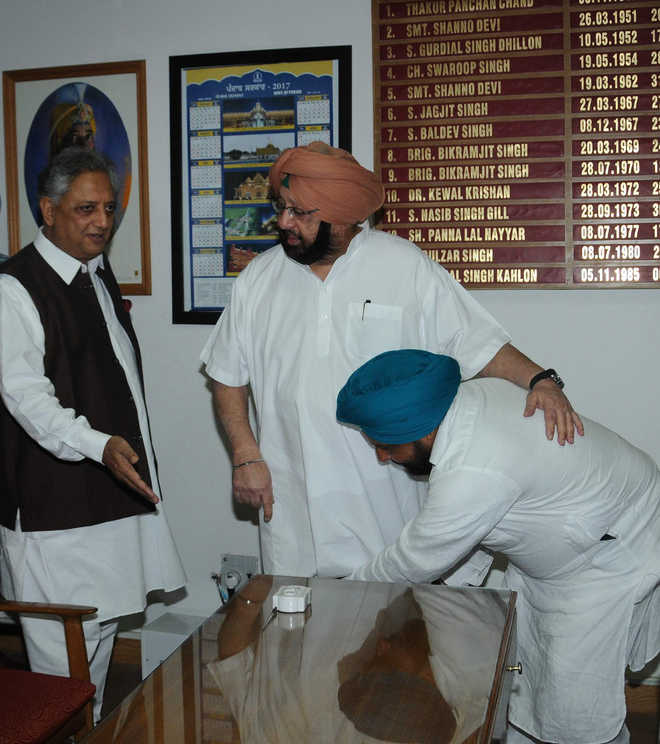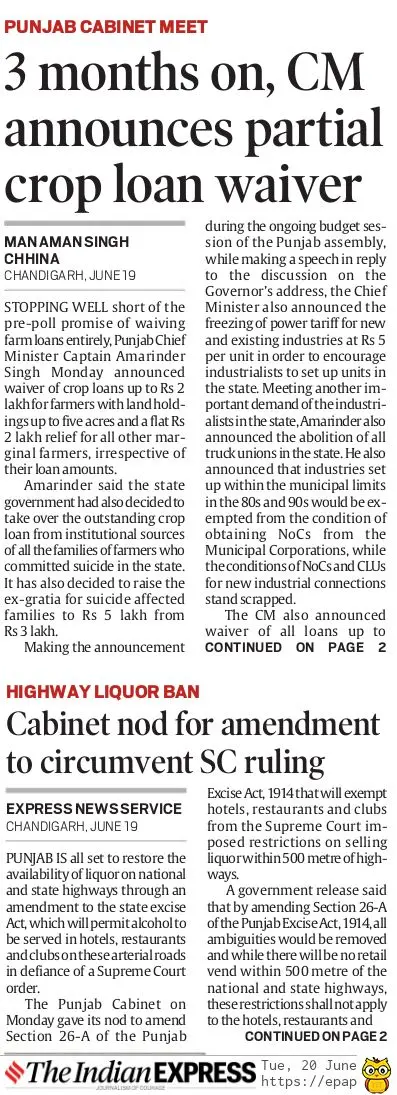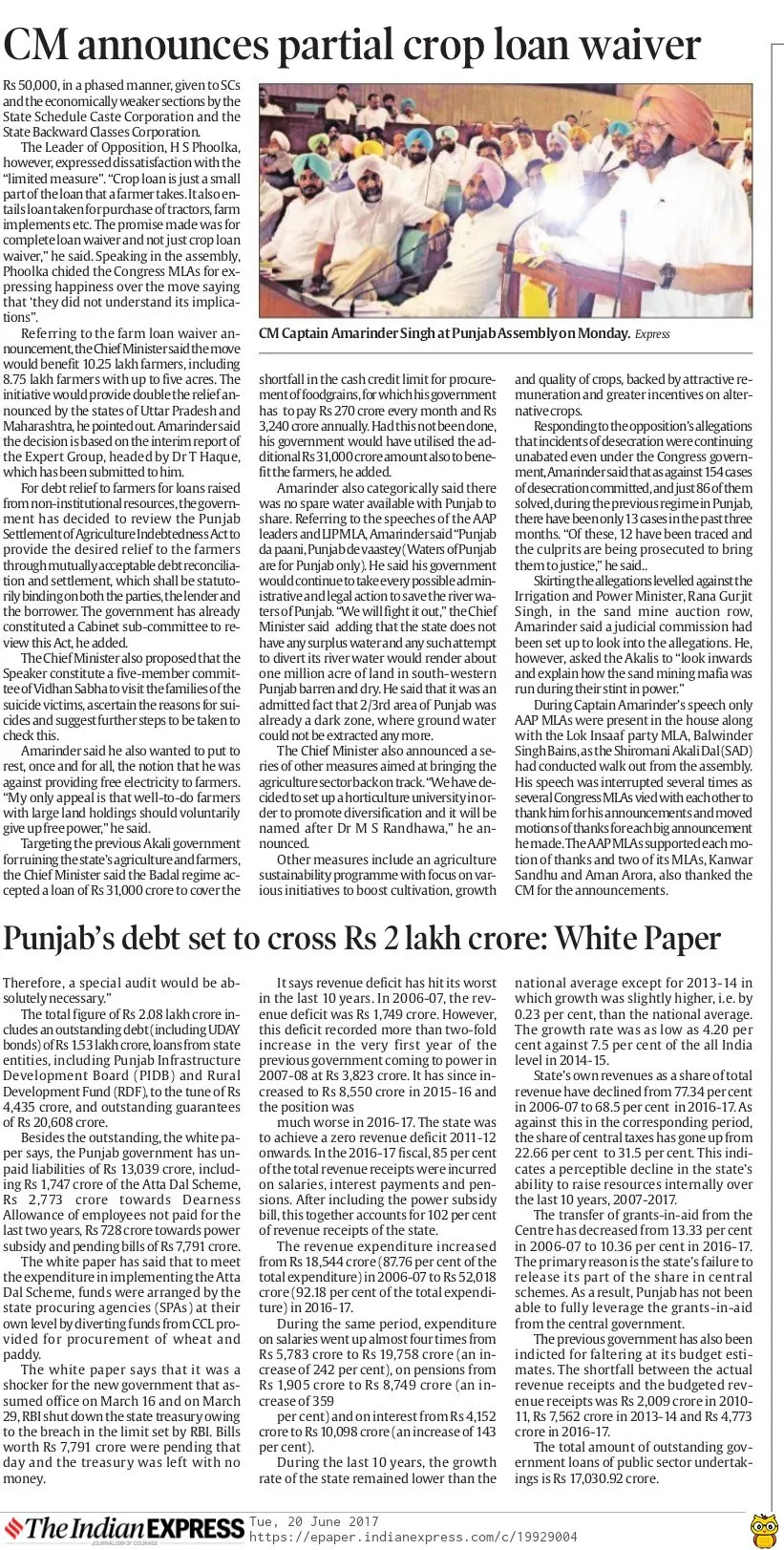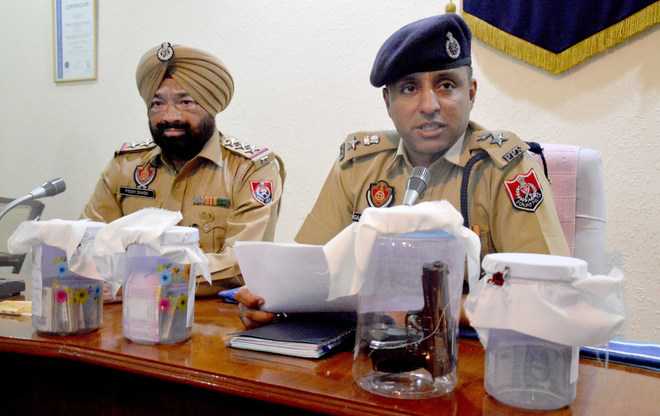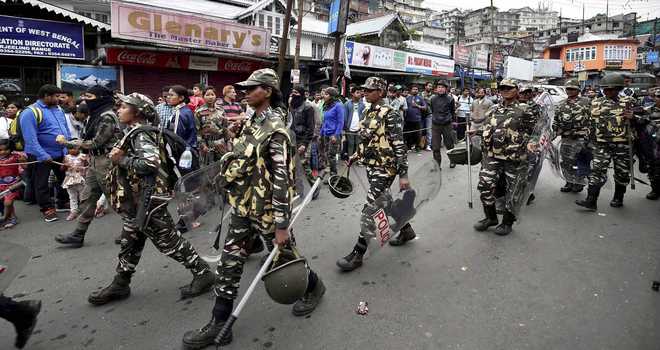
Security personnel patrol a road in Darjeeling on Friday. PTI
Darjeeling/New Delhi, June 16
Violence and arson marked the second day of the indefinite shutdown in Darjeeling hills on Friday, with the Army and paramilitary forces patrolling the streets to help restore calm.
(Follow The Tribune on Facebook; and Twitter @thetribunechd)
The scenic hills were largely shorn of tourists as Gorkhaland stir threw normal life into utter disarray.
Security personnel took out route marches in the hills as the Army patrolled the areas around Patlebas and Singamari where a large cache of weapons, explosives and cash were recovered yesterday.
As Darjeeling resembled a garrison town, with security personnel in riot gear fanning across its length and breadth, the Centre today decided to put on hold sending fresh troops to help restore normalcy as the state government has not yet submitted its report on the situation prevailing there.
Scores of alleged GJM activists descended on a panchayat office in Mirik, 50 km from Darjeeling, and set it on fire, an official said. A primary health centre was also set on fire at Lodhama.
Six suspected Gorkha Janmukti Morcha (GJM) supporters were detained today for allegedly setting ablaze a forest department office at Tarakhola in Kalimpong last night, a government official said.
“The situation is still very tense. Anything can happen. We have taken out a route march for area domination at various places,” a senior police officer said.
The turmoil, which was set off by the state government’s announcement about introduction of compulsory teaching of Bengali language in schools, has begun impacting day-to-day life in the hills with schools, markets and even bank ATMs shut.
There were hardly any tourists at the mall and on streets, which used to be teeming with them at this time of the year.
Hotels, restaurants and small eateries were closed and there were hardly any buses which could take stranded tourists, who had chosen to stay back ignoring the call by GJM leader Bimal Gurung to leave the hill station.
“We are waiting for a bus since 5.30 am but not a single bus is available to take us to Siliguri,” Aninda Bhaduri, a tourist, said.
“I have practical exams in Siliguri but there is not a single bus to take me there,” Swati Rai, another tourist desperate to get away from the strife-torn hills, said.
Tourists from foreign countries, who were among those stranded, found it difficult to leave due to lack of transport.
“We are standing in queues since early morning without any food and water. The police said there is no bus service and cars are also not available,” said Ralph, a French national, who had reached Darjeeling yesterday with his trekking team.
Meanwhile, the Centre today decided to put on hold despatching additional paramilitary forces to Darjeeling as the state was yet to send a report on the ground situation four days after it was sought.
The 400 additional personnel, whom the home ministry had yesterday decided to send to Darjeeling at the request of the state government, will not be despatched immediately, an official said.
“We will take a decision on sending additional paramilitary forces only when we make an assessment of the prevailing situation in Darjeeling. It is possible only when we receive a report from the state government, which has not sent it yet,” a Home Ministry spokesperson said. The Centre had sought a report from the Mamata Banerjee government on June 13.
Though there was relative calm in the hills after yesterday’s widespread violence, Gurung, who has gone underground, asked the people in a video message to be prepared for the “final battle” for achieving Gorkhaland.
“I urge the people to get prepared for the final battle as the time has come for a do or die fight if we want to achieve our dream of Gorkhaland,” Gurung, whose party is an ally of the Centre’s ruling NDA, said in the message from an undisclosed location.
Gurung’s message comes against the backdrop of the police raid on his premises at Singhmari and Patlebas in Darjeeling yesterday, following which the GJM, which controls the Gorkhaland Territorial Administration (GTA), gave a call for indefinite shutdown in the hills.
Police had seized over 300 weapons, including pickaxes, bows and arrows, explosives, night vision binoculars and cash during yesterday’s raids.
GJM general secretary Roshan Giri said, “Time for autonomy, GTA, DGHC is over. Now the fight will not stop until and unless our demand for Gorkhaland is fulfilled.” Gorkha Janmukti Morcha MLAs, meanwhile, called on West Bengal Governor K N Tripathi in Kolkata and alleged that the TMC government was trying to turn a political movement in Darjeeling Hills into a law and order issue.
GJM MLAs—Amar Singh Rai, Sarita Rai and Rohit Sharma from Darjeeling, Kalimpong and Kurseong respectively—met the governor at the Raj Bhawan here and apprised him of the situation in the hills.
They accused the TMC government of trying to turn a “peaceful political movement for a separate state of Gorkhaland into a law and order situation”.
“We have told the governor that the people who are indulging in arson are outsiders and have nothing to do with the GJM,” Rohit Sharma, one of the three MLAs, claimed after the meeting.
“We have requested the governor to inform the Centre about the situation in Darjeeling and the sufferings of people owing to the state government’s stance,” he said. PTI






















































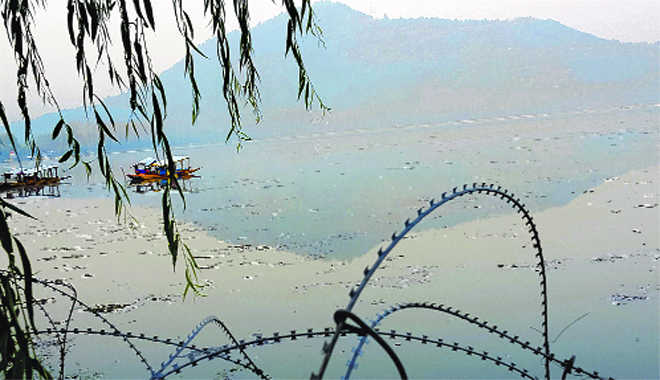
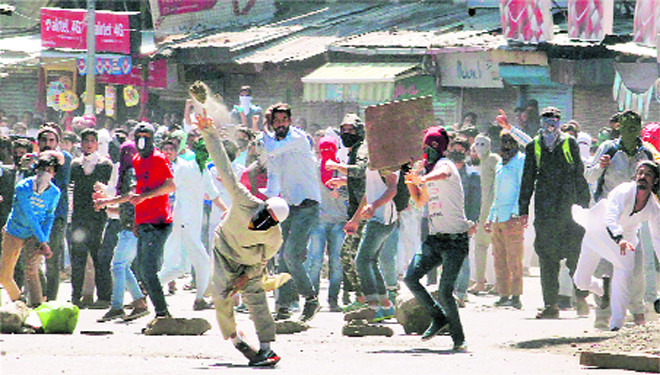
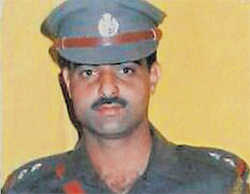
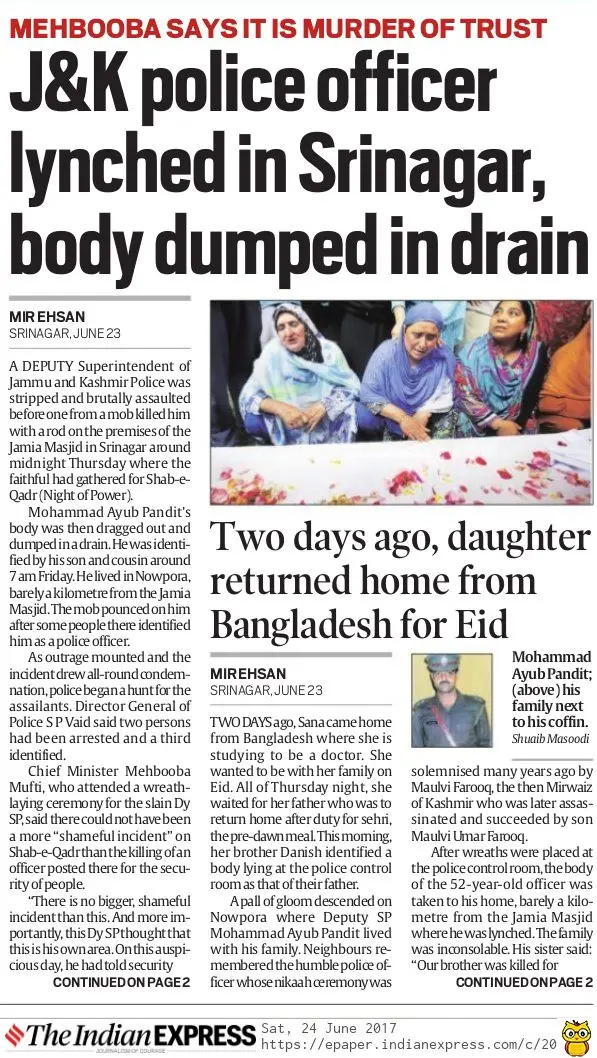
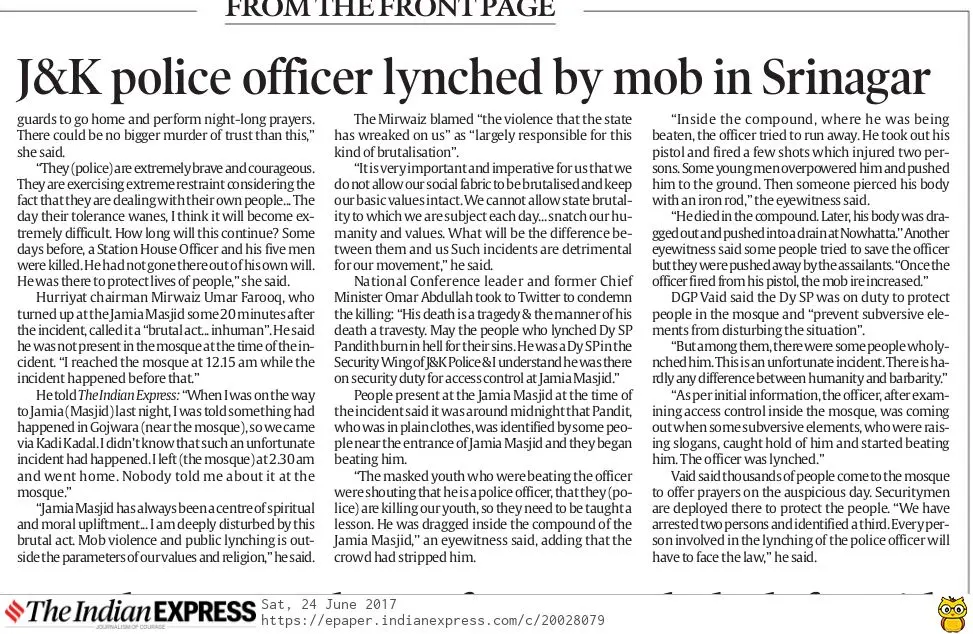
.jpg?w=640&q=60&fmt=pjpeg&auto=format)
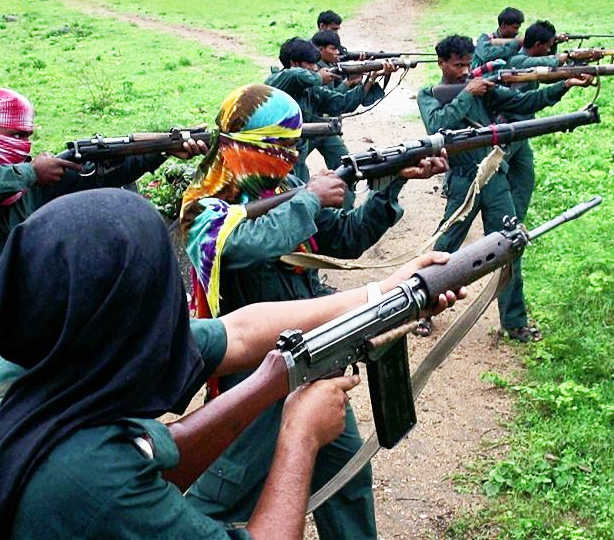
 KESHAV SINGH/HT
KESHAV SINGH/HT HT FILE
HT FILE
